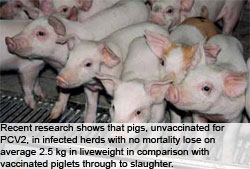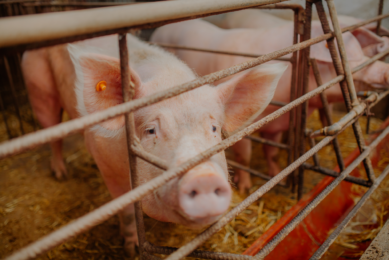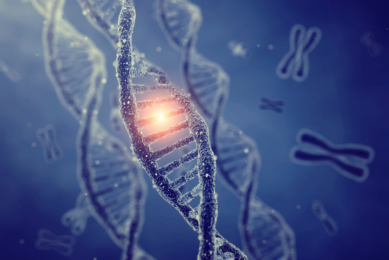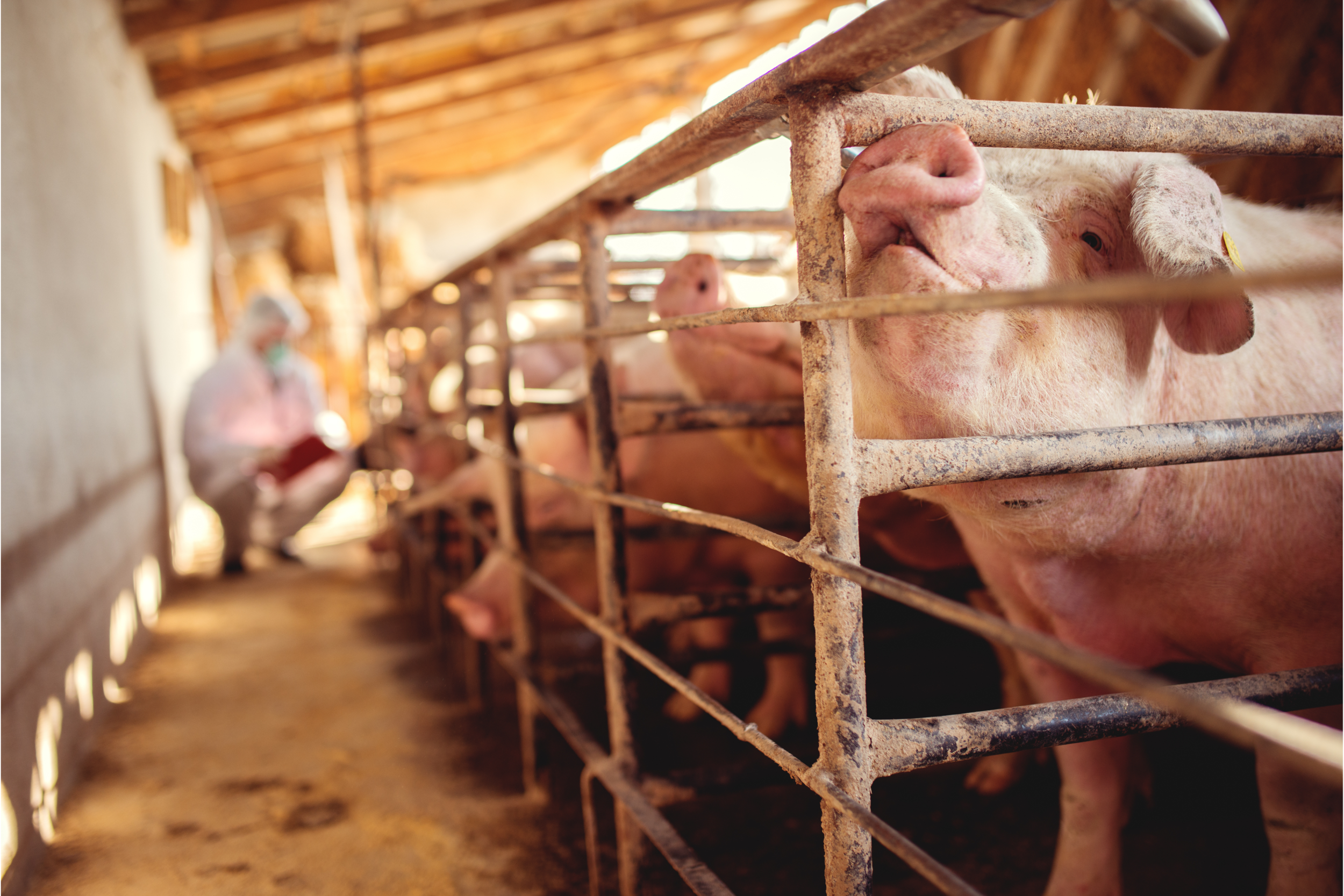The effect of PCV2 on liveweight and mortality

A number of farmers have observed that after starting vaccinating with porcine circovirus type 2 (PCV2) piglet vaccines the farm’s performance was better than it had been prior to breaking down with PCV2. How can this be?
By David Burch, veterinarian, Octagon Services, Old Windsor, Berkshire, UK
When first looking at the financial modelling of Post-weaning Multisystemic Wasting Syndrome (PMWS) affected farms, there was relatively little data and mainly the trials had been carried out on farms that had been severely affected. Simply, if there was a 6% mortality associated with PCV2 then usually there was about a 6 kg reduction in average liveweight gain in finisher pigs. Now that more trial data is accumulating of less severe (mild form) cases as well, a different picture is emerging.
In this overview, trial results are used from ten trials with a piglet vaccine, involving over 50,000 pigs carried out in North America and also in the EU as a dataset (see Table 1).
If these results are analysed together an interesting projection appears (see Figure 1). The results show that unvaccinated pigs in infected herds with no mortality lose on average 2.5 kg in liveweight in comparison with vaccinated piglets through to slaughter. As mortality increases by 1%, the average liveweight in surviving pigs decreases by approximately 0.5 kg, so that at 6% mortality the producer has not only lost 6% of his animals he also has depressed production of 5.5 kg on average in the survivors.
This can be explained by the severity of the damage caused to the pigs by the PCV2 viraemia in the pig’s body and the damage it does internally. The pig has to fight the infection and uses up energy to do so. One can liken it to an attack of influenza, which many of us have suffered this winter. You may not die but you usually lose several pounds (2-3 kg) in body weight. This is what is happening to the pig.
In several trials, the levels of virus in the blood (viraemia) have been recorded usually by quantitative PCR (DNA) methods (see Figure 2).
Nearly 80% of the pigs suffered a significant viraemia in the acute phase (greater than 104copies/ml of serum). Concentrations of virus above this level in the blood have been associated with mild to severe wasting disease and increased mortality. Even in the mild forms of disease this viraemia is taking place and reducing liveweight gain.
Rapid uptake
With the increased availability of PCV2 piglet vaccines in the EU, there has been a rapid uptake in the UK, with approximately 70% of piglets being vaccinated now, following the original introduction of the BPEX voucher scheme to encourage farmers to start vaccination. As the scheme ended, questions arose about the cost/benefit of vaccination in the less severely affected farms.
If we use the dataset analysis results on a batch of 100 pigs going through to slaughter, with a liveweight target of 100 kg, value/kg liveweight €1.10, even farms with PCV2 infection and no mortality should have an increased benefit/batch. As the mortality increases, the benefit from vaccination increases steadily (see Table 2).If one subtracts the cost of 100 piglet vaccine doses from the lost income figure, one can calculate the net benefit for each level of disease and even with zero mortality there is a positive benefit/ batch.As more data becomes available more sophisticated analyses can be introduced. In the US low weight (wasted) pigs are heavily penalised, fetching under half the price/kg than normal pigs. This additional cost has not been introduced into this model directly, but the benefits from preventing the effects that a PCV2 infection can have on weight gain depression, as well as increased mortality easily outweighs the cost of the piglet vaccine.











